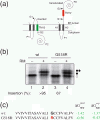The genome sequencing of an albino Western lowland gorilla reveals inbreeding in the wild
- PMID: 23721540
- PMCID: PMC3673836
- DOI: 10.1186/1471-2164-14-363
The genome sequencing of an albino Western lowland gorilla reveals inbreeding in the wild
Abstract
Background: The only known albino gorilla, named Snowflake, was a male wild born individual from Equatorial Guinea who lived at the Barcelona Zoo for almost 40 years. He was diagnosed with non-syndromic oculocutaneous albinism, i.e. white hair, light eyes, pink skin, photophobia and reduced visual acuity. Despite previous efforts to explain the genetic cause, this is still unknown. Here, we study the genetic cause of his albinism and making use of whole genome sequencing data we find a higher inbreeding coefficient compared to other gorillas.
Results: We successfully identified the causal genetic variant for Snowflake's albinism, a non-synonymous single nucleotide variant located in a transmembrane region of SLC45A2. This transporter is known to be involved in oculocutaneous albinism type 4 (OCA4) in humans. We provide experimental evidence that shows that this amino acid replacement alters the membrane spanning capability of this transmembrane region. Finally, we provide a comprehensive study of genome-wide patterns of autozygogosity revealing that Snowflake's parents were related, being this the first report of inbreeding in a wild born Western lowland gorilla.
Conclusions: In this study we demonstrate how the use of whole genome sequencing can be extended to link genotype and phenotype in non-model organisms and it can be a powerful tool in conservation genetics (e.g., inbreeding and genetic diversity) with the expected decrease in sequencing cost.
Figures



References
Publication types
MeSH terms
Substances
Grants and funding
LinkOut - more resources
Full Text Sources
Other Literature Sources

